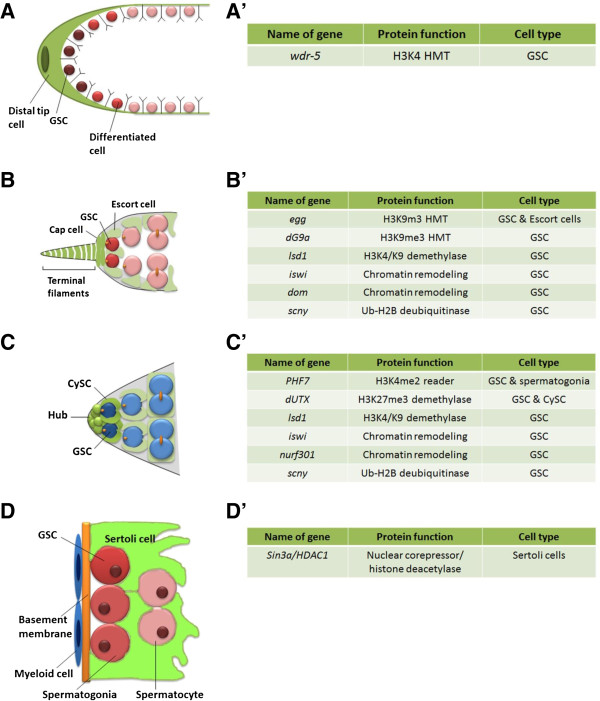Figure 1.
Illustrations of the GSC niches in C. elegans, male and female Drosophila and mouse. (A) C. elegans GSC niche. Illustration shows the distal tip cell which acts as a niche to maintain GSCs. Dark red GSCs are within the influence of the niche and are maintained as GSCs. The lighter GSCs are outside the influence of the niche which causes them to differentiate. (A’) Summary of epigenetic factors that regulate the C. elegans GSC niche. (B)Drosophila female GSC niche. Illustration shows tip of the germarium with GSCs (dark pink, average 2-3) in the niche comprised of terminal filaments and cap cells (dark green). Escort cells are shown in light green. GSC progenies are shown in light pink. (B’) Summary of epigenetic factors that regulate the Drosophila female GSC niche. (C)Drosophila male GSC niche. Illustration shows tip of the testis with GSCs (dark blue, average 9-12; only 2 are shown here) in the niche comprised of hub cells and CySCs (dark green). Cyst cells are shown in light green. GSC progenies are shown in light blue. Round orange structures represent spectrosomes, and branched orange structures represent fusomes. (C’) Summary of epigenetic factors that regulate the Drosophila male GSC niche. (D) Mouse GSC niche. Illustration shows Sertoli cells which function as a niche to maintain GSCs. Myeloid cells and the basal membrane function as support cells to the niche. GSCs (dark red) differentiate to form spermatogonia (light red) which further differentiate to spermatocytes (pink). (D’) Summary of epigenetic factors that regulate the mouse GSC niche.

